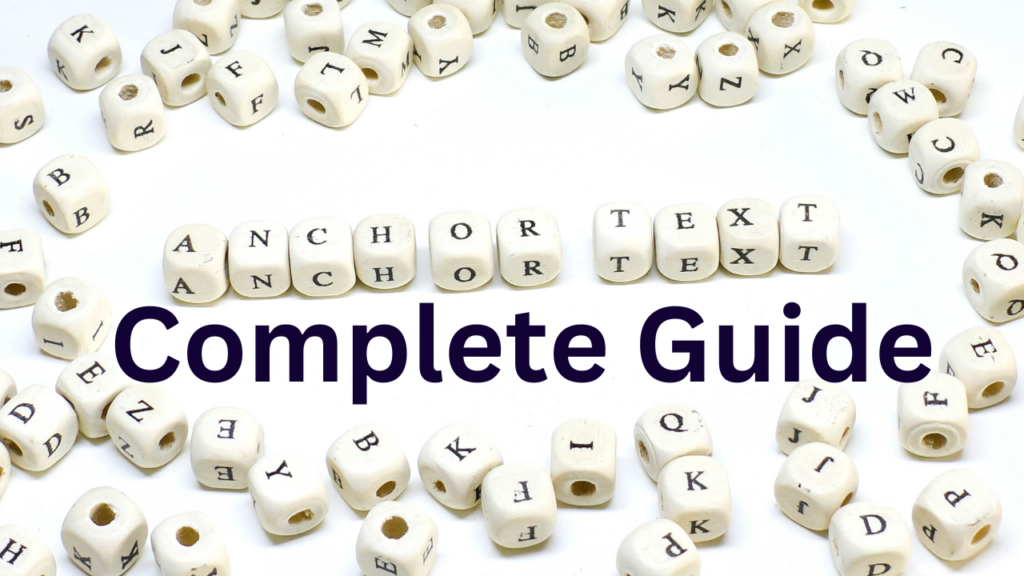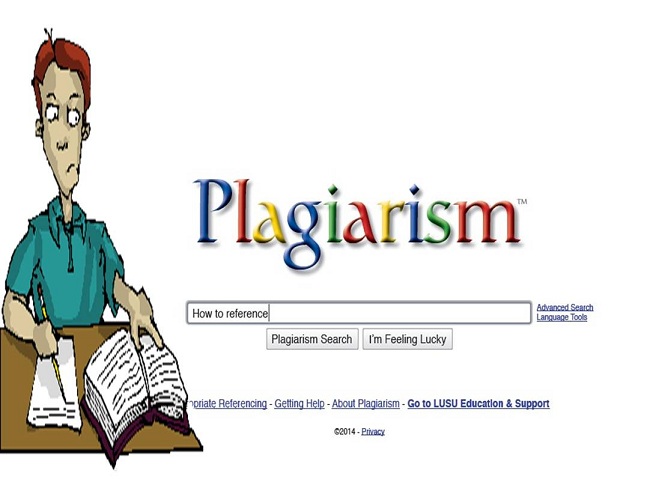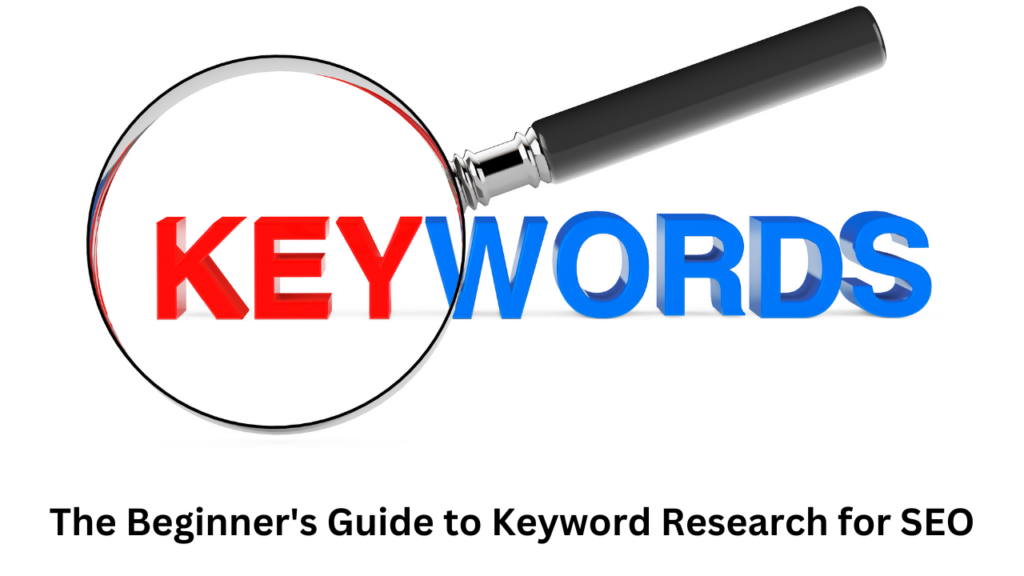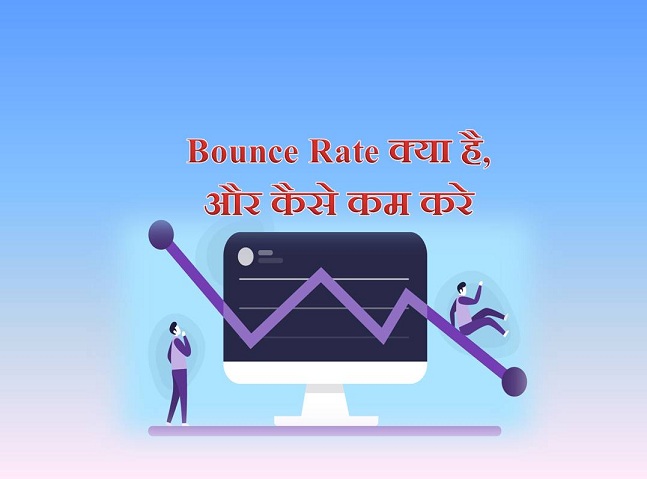Most new bloggers choose a niche for their content, but they often fail to understand their users’ intent. As a result, they write posts according to their perspective, which leads to their blogs not ranking well on Google’s SERPs.
If you want your blog to be popular among users and rank high, the first thing you need to do is understand search intent. In this article, “What is Search Intent: A Complete Guide For Beginners,” I will provide you with all the relevant information related to it.
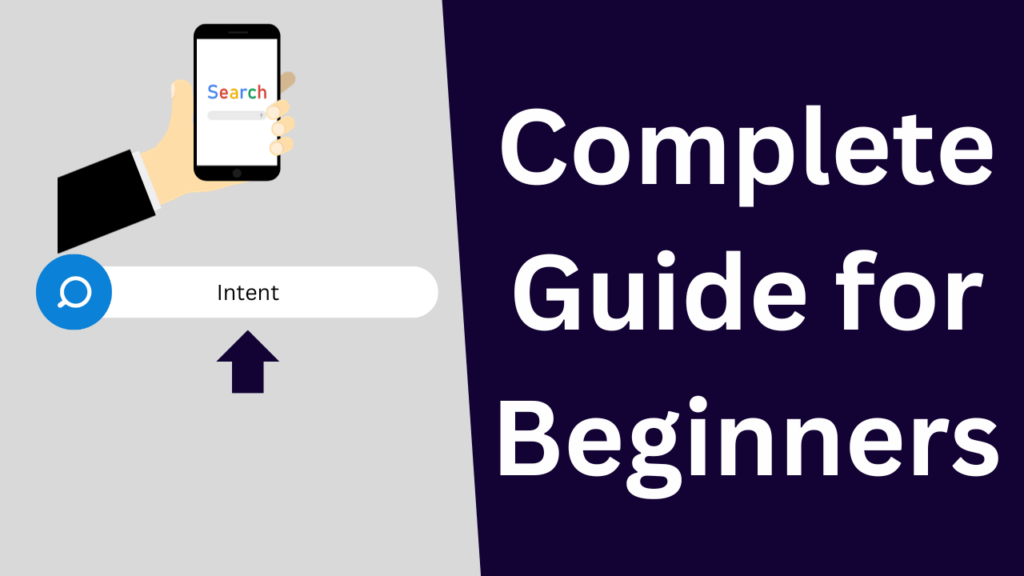
According to Backlinko.com, there are approximately 3.5 billion searches on Google every day, with 86,000 searches performed every second. This data gives you an idea of how extensively users rely on Google. Therefore, it is crucial to pay attention to what users are searching for on search engines and understand their intent when creating your content.
Bloggers who understand search intent effectively tend to rank their websites on the first page of SERPs. If you also aspire to see your website rank on the first page of SERPs, read this article through to the end.
In this article, I will provide you with comprehensive information about search intent, including what search intent is, the different types of search intent, how to optimize your content for search intent, why search intent is essential, and more.
So, let’s begin by understanding what search intent is.
What is Search Intent
Search Intent is also referred to as user intent or audience intent. It is the specific intention behind a search query made by a searcher on a search engine. Search intent represents what the searcher is looking for and attempts to fulfill that intent.
In simpler terms, when someone types a query into a search engine, what is their intent behind that query? They might want to know about a person, an object, a specific place, or inquire about the pricing of an item, among various other possibilities.
Many new bloggers fall behind in the world of blogging because they do not understand what search intent is. However, I would like to tell you that understanding search intent is not as difficult as it may seem. To comprehend search intent, you need to conduct research. You can use keyword research tools or question hubs for assistance.
Let me explain search intent to you through an example. Suppose you are a searcher, and you type “Jewellery” (only jewellery) into a search engine. What do you expect Google to provide in the search results? You might be looking to find the pricing of jewellery, or you want to learn about jewellery shops near your location, or you could be interested in images and designs related to jewellery.
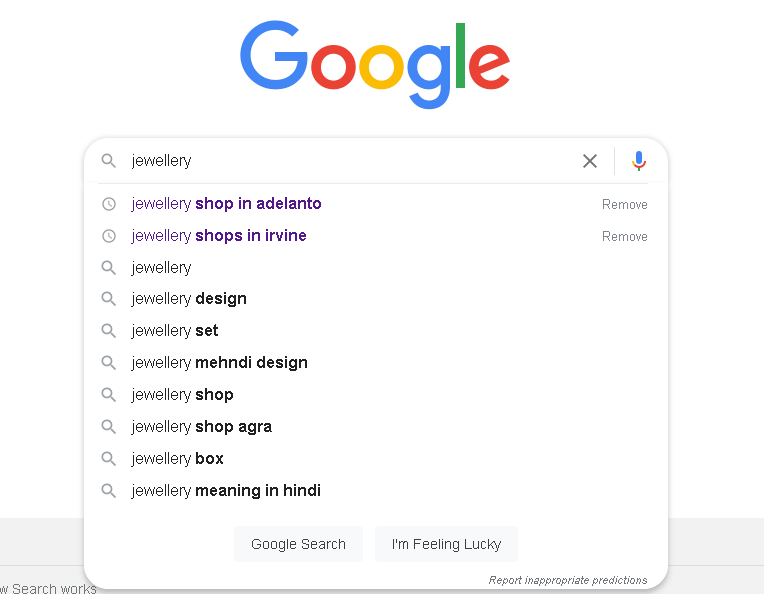
Many searchers follow the same approach, and as you are aware, Google has greatly advanced its algorithms. So, you can understand search intent with the help of search engines. You can determine how many meanings a word can have, and this way, you can decide on which topic to create your content.
Types of Search Intent
Now that you’ve learned what search intent is, let me tell you how many types of search intent exist. But before that, I’d like to ask if you know how SEO works. Perhaps many bloggers are familiar with the answer to my question, but for those who aren’t, I’ll explain that SEO operates on two main concepts: the first is the query, and the second is the content.
Based on this, search intent is divided into four parts, which are as follows:
| 1 | Informational Intent |
| 2 | Navigational Intent |
| 3 | Transactional Intent |
| 4 | Commercial Investigation |
1. Informational Intent
In search intent, the first type is Informational Intent. Most searchers use the Internet to find a lot of information. For example, information about SEO, weather, educational content, and so on.
You are probably well aware of how smart Google’s algorithms have become. Google now accurately identifies the intent of its searchers and provides answers accordingly. For example, if you type “tomato chutney” into Google’s search engine, it will show you results related to tomato chutney and not the history of tomatoes.
Furthermore, Google understands what its users are specifically looking to find. In Informational Intent, people may perform searches for specific questions or topics. There are many possibilities. That’s why Google comprehends them all and provides precise answers.
2. Navigational Intent
In Search Intent, the second type is Navigational Intent. Navigational intent involves navigating or finding a specific path. In Navigational Intent, Google understands the intent of searchers and helps them reach their destination. This type of search is when people are searching to go to a particular website, such as Facebook.
For example, when searchers want to go to Facebook, Google easily directs them to their destination. In addition to this, Google provides significant assistance in reaching various types of websites, including branded websites like Spotify login and many others.
3. Transactional Intent
The third type of Search Intent is known as Transactional Intent. As the name suggests, Transactional Intent is when people conduct searches with the intention of making transactions. In 2021, most activities are shifting online, whether it’s banking, grocery shopping, or regular shopping.
In Transactional Intent, searchers include words like “price” or “sale” along with the product or service they are looking for. Using these specific words helps Google understand their intent, and Google provides results accordingly.
For example, if you search for “Black Shoes,” Google will display various models of black shoes along with their prices. Additionally, Google will show you the names of websites related to these products, such as Amazon, Flipkart, Myntra, and more.
4. Commercial Investigation
The last category of Search Intent is Commercial Investigation, which can also be referred to as Commercial Intent. This type of intent represents a blend of informational and transactional searches. In Commercial Investigation, searchers want to make purchases, but they also seek accurate information about products. They aim to find answers through websites on Google.
For example, they may search for websites that provide product reviews, such as “Top 10 best Laptops,” “best Free WordPress themes,” or information about newly launched phones, including their pricing. Once they conduct thorough investigations and gather information, they make informed purchasing decisions.
Now that you understand the different types of Search Intent, you can choose the intent that aligns with your blog content. You can create review blogs, eCommerce websites, informational websites, or any other type of content that matches your comfort level and knowledge in the chosen field.
Why Search Intent is important for SEO
Search Intent is the reason why users perform searches. When someone searches on Google’s search engine, they have specific questions or topics in their mind. They might want to ask a question or seek information.
In the past, the main focus for keywords was optimization. Companies used to emphasize the literal meaning of keywords and collected information based on those keywords. Results were displayed to users based on this approach, but it often didn’t provide accurate answers, leading to frustration among users.
However, Google has made significant changes to its algorithms. Google’s primary focus now is to provide users with better results. It has started to understand search intent more effectively. Google aims to offer users accurate answers to their queries by collecting valuable information.
If you are not aware of searchers’ intent, your initial attempt to rank your page for a specific keyword may fail. This is because the SEO strategy that was intended to rank your page for that keyword will not work. If you look at the search results, Google actually doesn’t display a product page. The first page of SERPs only shows websites that satisfy users’ queries.
If you want your content to appear first for users, you need to make keyword search intent a central part of your SEO strategy. You need to understand why users are searching for a specific keyword and then use your content to fulfill users’ needs.
How to determine Search Intent?
One thing I want to tell you is that if you successfully determine search intent, you can use it to grow your audience and improve your website’s performance on Google’s SERPs.
Whenever you write an article, make sure to analyze your topic thoroughly first. Doing this will enable you to provide better results to your users. To help you determine search intent effectively, I’ve provided some points below. Let’s see what those points are:
1. Choose Right keyword
As you know, no search is possible without keywords. When searchers query the search engine, they may find answers to some of their questions, but not to others. You can leverage both of these conditions to select your niche.
Here’s how you can take advantage of this:
- Identify Existing Keywords: You can identify keywords that are actively searched on Google by using search engine filters or online keyword research tools. Google offers a variety of keyword research tools that can help you in this regard.
- Discover Unanswered Queries: On the other hand, you can use Google Question Hub to find keywords for which answers are not readily available. This resource provides you with keywords that have not been addressed in articles yet. It can be particularly beneficial for new bloggers.
By exploring both existing keywords and unanswered queries, you can make informed decisions about your niche and content strategy. This approach will help you create content that meets the needs of your target audience and potentially stands out from the competition.
2. Check SERP Results
Another method to determine search intent is by conducting thorough research on SERP (Search Engine Results Page) results. Here’s how you can do it:
- Start by typing your chosen keyword into the search bar and see what results Google displays for that specific keyword.
- Take a look at how many different answers or types of content appear for the keyword you searched for.
- Analyze the results to categorize the search intent into one of the four primary categories:
- Informational Intent: This is when searchers are looking for answers to questions (e.g., “What is a domain?”).
- Transactional Intent: This is when searchers intend to make a purchase (e.g., “Realme 6 Pro price”).
- Navigational Intent: This is when searchers are trying to reach a specific website or page (e.g., “Facebook login”).
- Commercial Intent: This is when searchers want to research a product before making a purchase (e.g., “Laptop review”).
By categorizing search intent based on the SERP results, you can tailor your content to match the specific intent of your target audience, ensuring that your content aligns with their search queries and preferences.
How to Optimize Search Intent for Content?
Once you’ve determined your search intent, you’ll need to optimize it for your content. For this, you should write your content according to the preferences of your target audience.
If you want users to have a good experience when they land on your page and not get bored with unnecessary extra content, you need to deliver exactly what they came for. Directly provide them with the information or solutions they are seeking.
Almost all website owners optimize their content for search intent. Here are some tips to help you with this:
- Use Mapping:
- Understand and map the user’s journey through the content.
- Extract Data from SERPs:
- Gather data from search engine results pages to understand what users are looking for.
- Analyze Existing Content:
- Analyze your existing content to ensure it aligns with the search intent.
- Match Metadata and Content:
- Ensure that your metadata and content align with the search intent.
- Check Ranking Websites for Specific Keywords:
- Examine websites that rank well for specific keywords and see what kind of content they provide.
Optimizing your content for search intent is crucial to provide users with the information or solutions they seek, leading to better user experiences and improved SEO performance.
Conclusion:- What is Search Intent: A Complete Guide For Beginners
According to one of Google’s co-founders, Larry Page, Google’s SERPs are designed to provide searchers with exactly the answers they are looking for when they search for a keyword.
Most new bloggers often struggle to understand what search intent is, and as a result, they fall behind. On the contrary, those bloggers who understand search intent move ahead.
Therefore, before choosing a keyword for your article, you need to research it thoroughly to understand the motives of people who are conducting searches on Google. You need to find out what they want, what they are looking for, and why they are searching for a specific keyword.
If you can determine search intent effectively, it will be beneficial for your website. It will bring traffic to your website and increase your earnings. Most search intents typically have four motives, as I mentioned in the article above.
These four intents can be very useful for your website. One thing to always keep in mind is that after selecting your keywords, you must optimize them. If you don’t do that, your hard work won’t be as successful as you hoped.
FAQ: Search Intent
Q1. What is High Intent keyword?
Ans. I have observed that most people tend to search for high intent keywords. First, let me explain high intent keywords, also known as high commercial intent keywords. These keywords indicate a strong intention on the searcher’s part to perform a transaction, such as making a purchase, inquiring about a service, or taking some other action that may lead to a transaction in the future.
High intent keywords are typically used when individuals are ready to make a decision or take action. They often signal a strong purchase or conversion intent. Examples of high intent keywords include phrases like “buy now,” “hire a plumber,” “best smartphone deals,” “top-rated web hosting,” and so on. These keywords are valuable for businesses and websites aiming to target users who are closer to making a decision or taking a desired action.
Using high intent keywords effectively in your content and optimization strategies can help attract users who are more likely to convert, whether through a purchase, sign-up, or any other desired action.
Q2. What is Local Intent?
Ans. Local intent, as the name suggests, refers to search queries that indicate a user’s desire to find information, products, or services in their local area. These searches often include location-specific terms, such as city names, “near me,” or specific landmarks. Local intent is all about helping users find businesses, restaurants, stores, or services in their immediate vicinity.
For example, if you live in Mumbai and you search for “a South Indian restaurant near me,” this is a clear example of a search query with local intent. The user is looking for South Indian restaurants specifically in their local area, and they expect Google to provide results that match their immediate geographical location.
To cater to local intent, businesses and websites can use local search engine optimization (SEO) strategies, including optimizing for local keywords, setting up Google My Business profiles, and ensuring their online presence is visible to users seeking local information. Google’s search results often include a “Local Pack” or “Map Pack” that shows businesses matching the user’s local intent, making it crucial for local businesses to optimize for these queries.
Q3. What is Low Intent?
Ans. Low intent keywords typically represent search queries where users are seeking information or are looking for specific websites with little intention to make immediate transactions or take further actions. These keywords are characterized by lower commercial intent and often have a broader or more general focus. Here are some characteristics of low intent keywords:
Informational Focus: Low intent keywords are often used by users who are looking for general information, answers to questions, or educational content. They are typically not ready to buy or engage in a transaction.
Broad Topics: Low intent keywords tend to cover broad topics and may not specify a particular product, service, or location. Users are exploring and gathering information.
Exploratory Nature: Searchers using low intent keywords are in the early stages of the decision-making process. They are not yet committed to making a purchase or taking specific action.
Lower Search Volume: These keywords may have lower search volume compared to high intent keywords, as fewer users are actively searching for them.
Lower Competition: Low intent keywords may present opportunities for content creators and websites to target less competitive search terms and provide valuable information.
Examples of low intent keywords include general questions like “how to bake a cake,” educational queries like “history of the Eiffel Tower,” or searches for well-known websites like “Facebook login.”
While low intent keywords may not directly lead to conversions, they can be valuable for attracting users early in their research process and building trust and authority in your niche. Creating high-quality content that answers these informational queries can help establish your website as a reliable resource, potentially leading to higher intent searches and conversions in the future.
